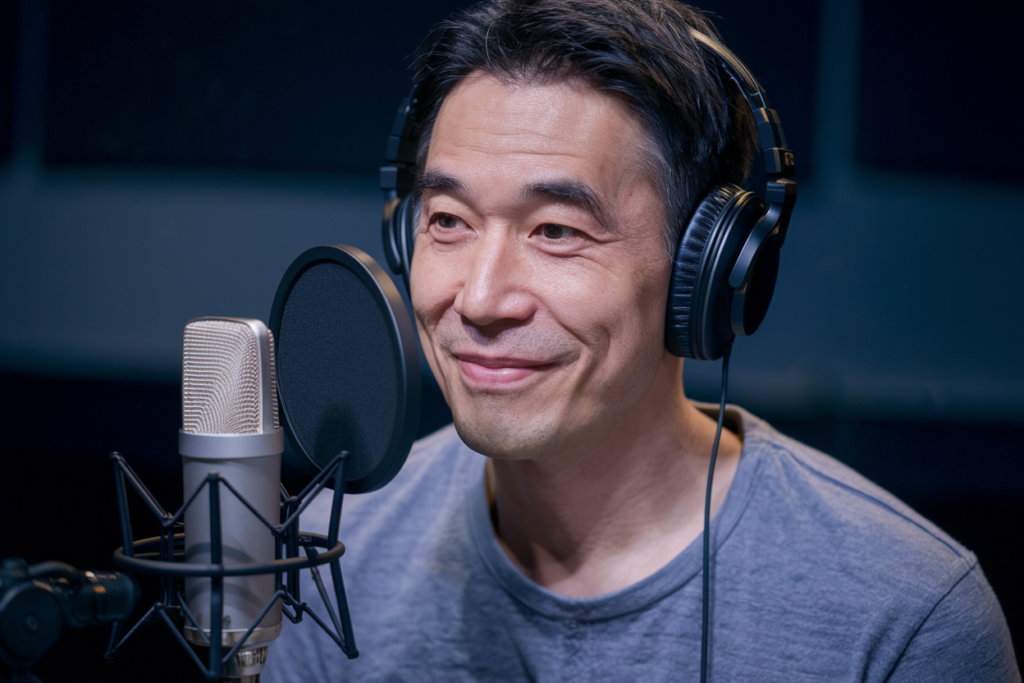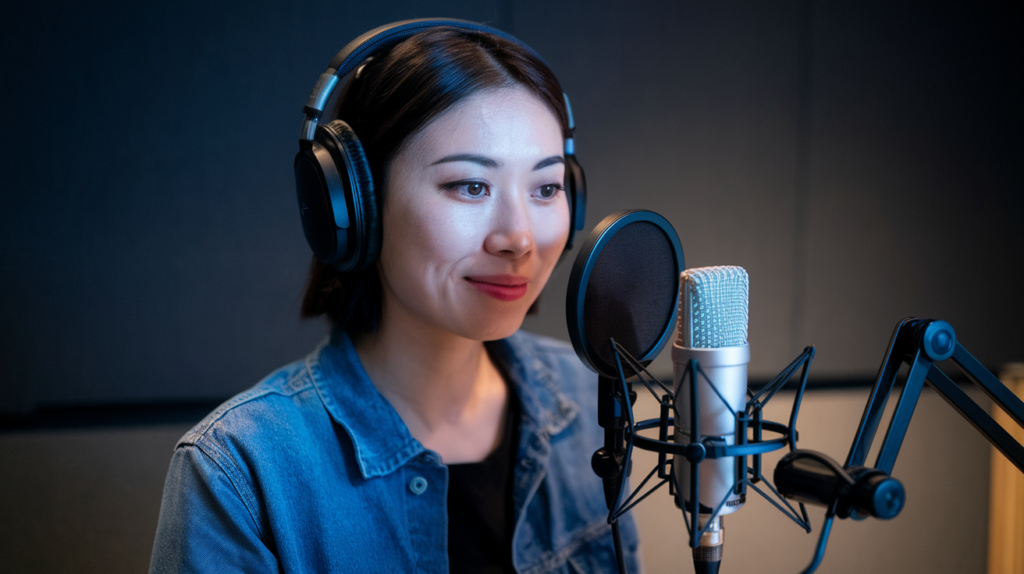Key Takeaways
- Understanding Lip Sync Importance: Effective lip sync in Japanese dubbing enhances viewer immersion, strengthens emotional connections, and keeps the audience engaged with the narrative.
- Challenges of Language Differences: The unique structure of the Japanese language requires voice actors to adapt their delivery for precise alignment with character mouth movements, impacting pacing and timing.
- Role of Voice Actors: Successful lip sync hinges on voice actors’ ability to analyze character expressions and emotions, ensuring that their performance resonates authentically with viewers.
- Collaborative Effort: Mastering lip sync is a team effort involving directors, sound engineers, translators, and voice talent working together to create a seamless viewing experience.
- Cultural Nuances Matter: Understanding cultural context is crucial for delivering dialogue that feels natural and maintains authenticity in Japanese dubbing.
- Real-time Adjustments are Key: Timing adjustments during recording sessions help ensure that vocal delivery aligns perfectly with visual cues, enhancing storytelling through compelling performances.
Ever wondered why some Japanese dubbing feels off, leaving you distracted from the story? Managing lip sync in Japanese dubbing isn’t just a technical challenge; it’s an art form that can make or break the viewer’s experience. When done right, it immerses you in the narrative and enhances emotional connections with characters.
Understanding Lip Sync in Dubbing
Lip sync in dubbing involves aligning voiceovers with the mouth movements of characters on screen. Getting this right is crucial for maintaining immersion and ensuring the audience connects emotionally with the narrative. When done effectively, it creates a seamless viewing experience.
Japanese dubbing often presents unique challenges due to differences in language structure and syllable timing. Japanese speech can be more concise than English, leading to instances where voice talent must adapt their delivery. This adaptation ensures that dialogue matches not only the lip movements but also conveys the intended emotions.
Voice over artists play a vital role in this process. They need to analyze character expressions and emotional cues before recording their lines. A deep understanding of these elements allows them to deliver performances that resonate with viewers while synchronizing perfectly with visual prompts.
Timing is another key factor in achieving effective lip sync. Voice actors must adjust their pacing according to character actions and scene dynamics. They rely on precise direction from sound engineers who monitor synchronization throughout the recording sessions, making real-time adjustments as necessary.
In addition, cultural nuances affect how dialogue is translated and delivered in Japanese dubbing. Scriptwriters often work closely with voice over talent to ensure that local idioms or expressions feel natural within context, enhancing both engagement and authenticity for audiences.
Ultimately, mastering lip sync isn’t just about technical precision; it’s an art form that requires collaboration between voice talent, directors, sound engineers, and translators. Each element contributes significantly toward creating a compelling final product that captivates your audience’s attention from start to finish.
Importance of Managing Lip Sync
Managing lip sync plays a crucial role in Japanese dubbing, significantly impacting how audiences perceive and engage with the content. When voiceovers align perfectly with character mouth movements, viewers immerse themselves in the story. This seamless synchronization enhances emotional connections, making characters feel relatable and authentic.
Impact on Audience Experience
Great lip sync ensures that your audience remains focused on the narrative rather than getting distracted by mismatched audio and visuals. When a voice actor delivers lines that match their character’s expressions, it creates a more believable experience. Conversely, poor lip sync can lead to confusion or disengagement, as viewers may notice discrepancies between what’s spoken and what they see. The goal is to create an engaging atmosphere where every subtle expression resonates with the dialogue delivered by the voice artist.
Influence on Voice Acting Performance
Voice acting performance hinges on effective lip sync management. Voice actors must analyze character expressions closely to deliver lines that reflect emotions accurately while matching mouth movements. This requires skillful timing and pacing adjustments based on on-screen actions. Sound engineers play a vital role here—they provide real-time direction ensuring that voiceovers synchronize flawlessly with visual elements. By fostering collaboration between directors, translators, and voice talent, you can craft performances where every word feels genuine and impactful.
Mastering lip sync isn’t just about technical precision; it’s about enhancing storytelling through compelling vocal performances that resonate deeply with audiences.
Techniques for Effective Lip Sync
Managing lip sync effectively enhances viewer immersion in Japanese dubbing. This section details key techniques that ensure voiceovers align seamlessly with character movements.
Timing and Pacing Adjustments
Timing plays a critical role in achieving effective lip sync. Voice actors must adjust their pacing to match the rhythm of character speech while considering emotional nuances. For instance, if a character is expressing excitement, the delivery may speed up to maintain energy, whereas somber moments often require slower pacing. Coordinating with sound engineers during recording sessions allows for real-time adjustments. By consistently aligning vocal delivery with visual cues, you strengthen the connection between characters and viewers.
Matching Emotion and Context
Emotion drives storytelling, making it essential for voiceovers to reflect the context of scenes accurately. Voice artists need to analyze character expressions and situations closely, ensuring their delivery matches these elements authentically. For example, a moment of tension demands a vocal intensity that resonates with viewers’ emotions. Collaborating with directors can provide valuable insights into desired emotional tones, enhancing overall performance quality. When voice talent conveys genuine emotion through their lines, it elevates the narrative experience for audiences significantly while reinforcing engagement throughout the viewing process.
Challenges in Japanese Dubbing
Japanese dubbing presents distinct challenges, particularly in managing lip sync. Achieving seamless alignment between voiceovers and character mouth movements demands precision and creativity from voice talent.
Cultural Nuances and Expression
Cultural nuances significantly impact the delivery of dialogue in Japanese dubbing. Different cultural contexts shape emotional expressions, requiring voice artists to adapt their performances accordingly. When translating scripts, understanding local idioms and societal norms is crucial for creating authentic dialogue that resonates with viewers. For instance, a phrase that conveys humor in one culture might not translate effectively into another, affecting both timing and tone. Voice actors must interpret these subtleties while maintaining the essence of character emotions.
Technical Limitations
Technical limitations also pose challenges during the dubbing process. The varying syllable structure between languages can complicate synchronization efforts. Japanese tends to have shorter syllables compared to English; thus, voice over talent often needs to adjust pacing dramatically to fit existing lip movements without sacrificing meaning or emotional depth. Additionally, sound engineers play an essential role in capturing high-quality audio that complements animated visuals while ensuring precise timing during recordings.
Mastering these challenges requires collaboration among all involved—voice actors need clear direction from directors while working closely with translators who understand both linguistic intricacies and cultural context.
Conclusion
Mastering lip sync in Japanese dubbing is an intricate balance of artistry and technical skill. When done right, it elevates the viewer’s experience by creating a seamless connection with the characters and their emotions. Your understanding of timing pacing and cultural nuances can significantly influence how audiences perceive the narrative.
Recognizing the unique challenges posed by language differences empowers you to adapt your delivery effectively. Collaboration among voice actors directors and translators is key to overcoming these hurdles ensuring that every performance resonates authentically with viewers. By embracing this complexity you contribute to a richer storytelling experience that captivates audiences on multiple levels.
Frequently Asked Questions
What is lip sync in dubbing?
Lip sync, or lip synchronization, in dubbing refers to aligning voiceovers with the mouth movements of characters on screen. This technique is vital for creating an immersive experience, as it enhances emotional engagement and helps viewers connect with the narrative.
Why is effective lip sync important in Japanese dubbing?
Effective lip sync is crucial in Japanese dubbing because it maintains viewer immersion and strengthens emotional connections. Poor synchronization can distract audiences and lead to confusion, diminishing their overall experience of the story.
What challenges do voice actors face in achieving lip sync?
Voice actors face several challenges when achieving lip sync, including adapting their vocal delivery to match character mouth movements and emotional expressions. They must also adjust pacing due to differences in language structure and syllable timing between languages.
How do cultural nuances affect Japanese dubbing?
Cultural nuances significantly influence dialogue translation and delivery in Japanese dubbing. Voice artists must understand local idioms and societal norms to create authentic performances that resonate with viewers emotionally while maintaining fidelity to the original content.
What techniques help achieve effective lip sync?
Techniques for achieving effective lip sync include adjusting timing and pacing according to character actions, matching vocal delivery with speech rhythm, and ensuring that emotion reflects character expressions accurately within context. Collaboration among all involved parties is essential for success.







